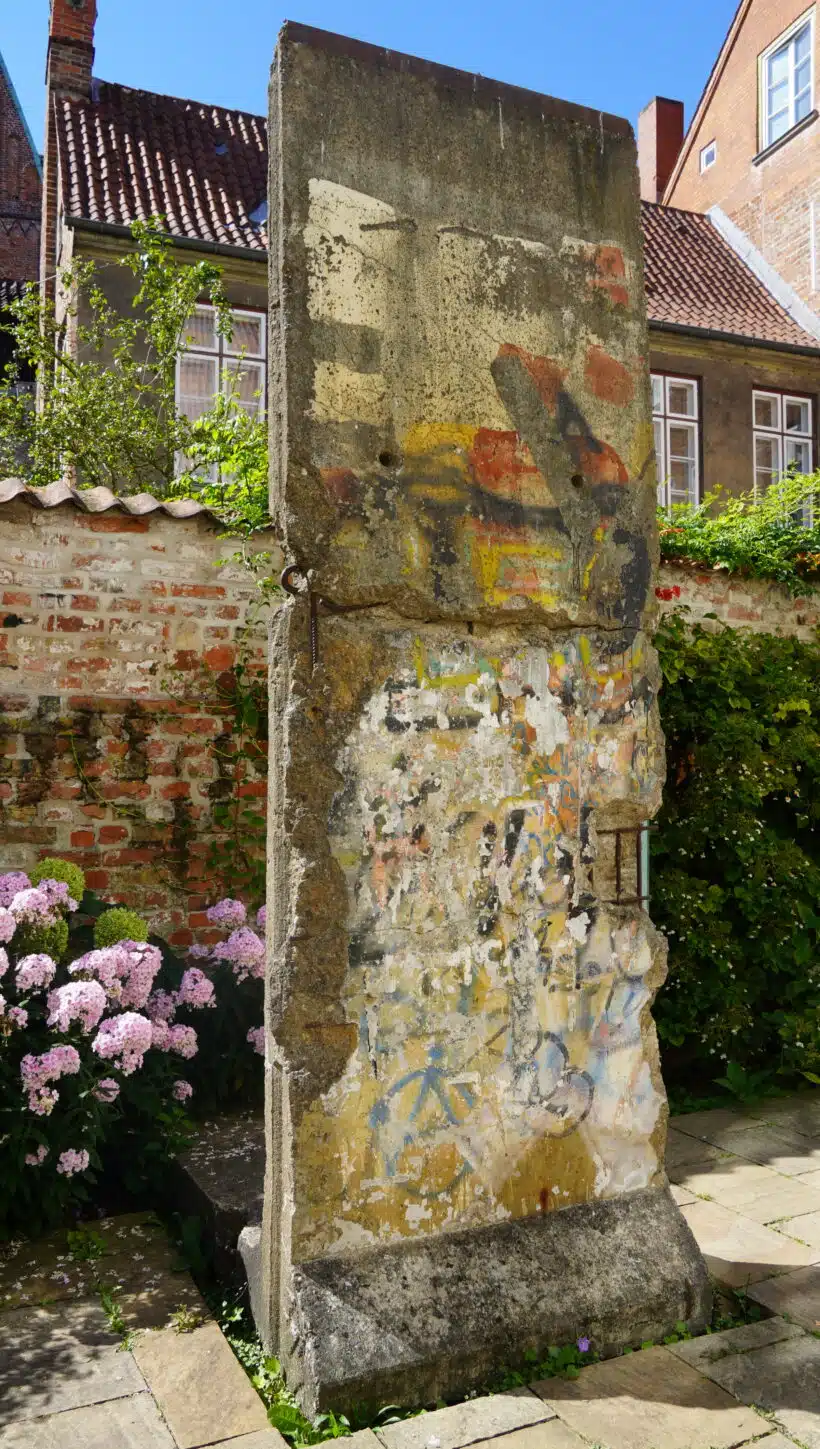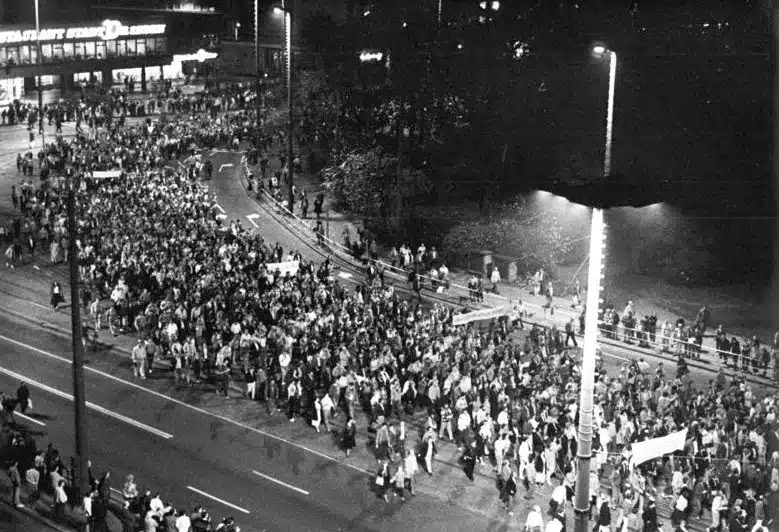In the courtyard of the Willy-Brandt-House Lübeck stands a piece of the Berlin Wall. It is one of the more than 45,000 wall segments that brutally sealed off 184 km of West Berlin from the eastern part of the city and the surrounding area. With the construction of the Wall on August 13, 1961, the GDR government had finally cemented the division of the city, Germany and Europe since the end of World War II, and the monstrous structure immediately became a sad symbol of the Cold War.

Democracy is Alive
After the fall of the Wall on November 9, 1989 , the Berlin Wall was demolished in a very short time. Since then, more than 250 wall segments have been moved to places all over the world, where – as in the courtyard of the Willy-Brandt-House in Lübeck – they serve as reminders of the bloc confrontation and its happy, because non-violent, end.
But the pieces of the wall are not only a reminder of a historical era that has been gone for more than 30 years, in which Willy Brandt played a significant role as the first Social Democratic German Chancellor and later Nobel Peace Prize winner. But this article is not about him, nor is it about the political course he set in the late 1960s and early 1970s in the relationship between the Federal Republic and the GDR against strong resistance, thus making possible in the long term what he called the reunification of Germany after the fall of the Wall.
Courage
Instead, it will be about the courage of all those people in the GDR who resisted those in power toward the end of the 1980s. Because the pieces of the wall are also a reminder of this: The courage and steadfastness with which tens of thousands took part in the Monday demonstrations in Leipzig, Dresden and elsewhere in East Germany in the fall of 1989, with which they contributed significantly to the unexpected implosion of the GDR in both East and West. Each of these demonstrations was accompanied by fear of a violent reaction by the state, of a “Chinese solution,” as it was called in reference to the massacre with which the Beijing state leadership had bloodily nipped civil society demands for democratic reforms in the bud in early June 1989.

But even independent of this threat, it took courage to stand up for political self-determination in the GDR. The system responded to even the slightest obstinacy with inhumane harassment or intimidation; demands for democratic freedoms were sanctioned, sometimes with occupational bans, sometimes with imprisonment. And yet many people in the GDR at that time defied arbitrary state power and demanded their political rights – first and foremost free and secret elections, freedom of expression, free choice of residence, profession, free exercise of religion.
The difference to certain demonstrators today could not be greater, the pieces of the wall are also a reminder of that.
Political self-determination is not to be confused with personal self-realization.
Democratic freedoms and human rights are a common good; they do not function according to the self-service principle, but in consideration and with the whole of society in mind, as difficult as that may be to bear individually. Otherwise, they are in danger of being lost to us.
